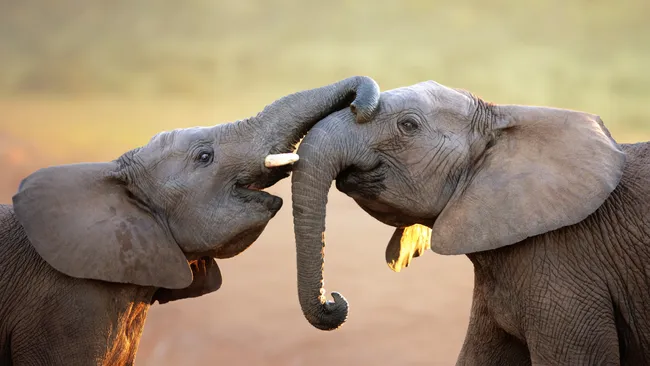Elephants, it seems, have a sophisticated repertoire of communication tools at their disposal, utilizing ear flaps, rumbles, trunk reaches, and various other forms of interaction when greeting their peers, suggests new research.
Published on May 9 in the journal Communications Biology, the study sheds light on the intentional nature of elephant communication, revealing that they adjust their greetings based on the attention level of their counterparts. For instance, if another elephant is already attentive, visual gestures such as ear flaps are more common, whereas touch is favored when attention needs to be drawn.
Lead author of the study, Vesta Eleuteri, a graduate student at the University of Vienna, expressed her excitement at understanding how elephants utilize their bodies for communication, emphasizing the significance of this often overlooked aspect.
Traditionally, elephant communication research focused on sound and smell separately, neglecting the potential integration of senses. Eleuteri’s team, however, took a holistic approach, observing and categorizing various forms of communication, including visual gestures, vocalizations, touches, and scent-related behaviors.
Their findings highlighted a correlation between low rumble noises and ear flapping, indicating a deliberate effort to communicate. Additionally, elephants typically made eye contact before gesturing, further suggesting intentionality.
Robbie Ball, a researcher in comparative cognition at Hunter College and the Graduate Center at the City University of New York, praised the study’s exploration of multi-modal communication, drawing parallels between elephants’ behavior and human communication patterns.
The research, conducted with a group of semi-wild elephants in Zimbabwe, underscores the complexity of elephant social dynamics. By observing their greetings upon reunions, researchers uncovered insights into their intricate relationships and social structures.
Elephants, like humans, navigate complex social worlds, forming bonds and keeping track of relationships over time. Eleuteri proposed that the longevity of elephant lives and their extensive social networks might have driven the evolution of such sophisticated communication strategies.
